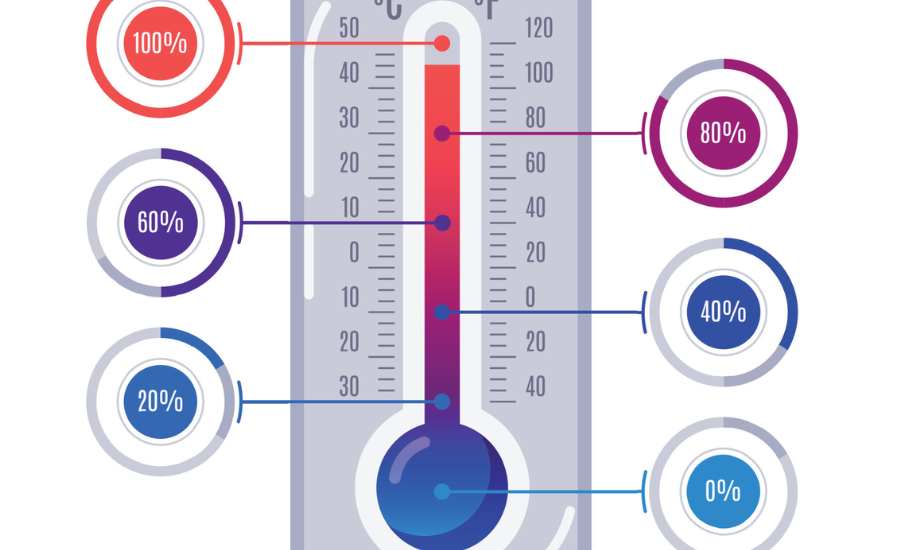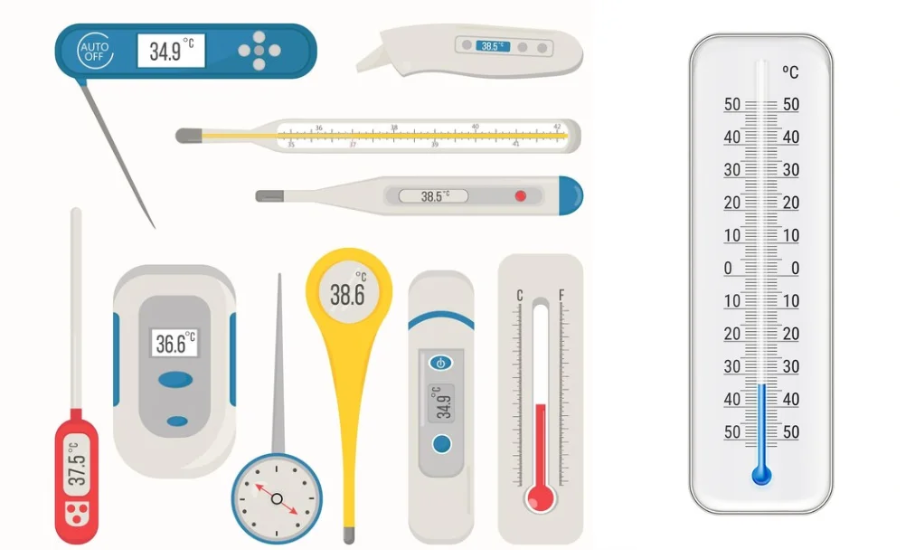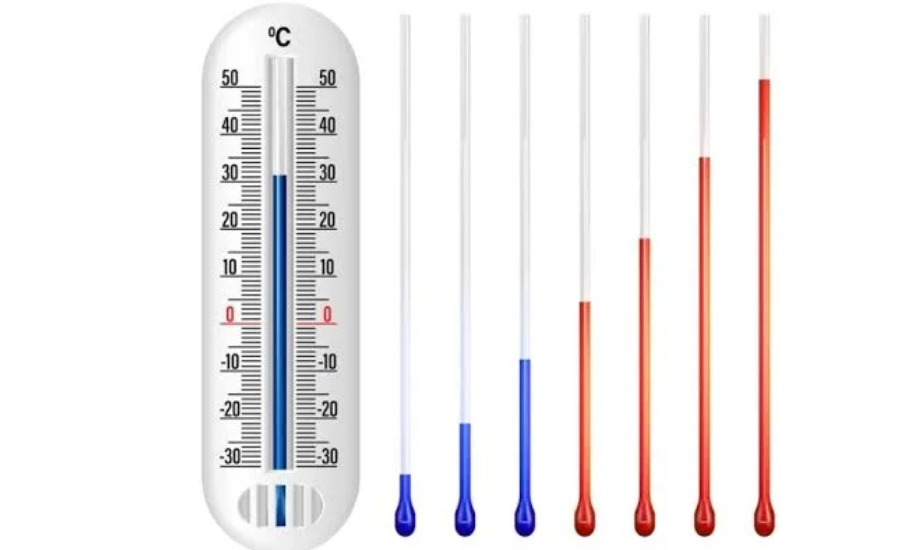Understanding temperature conversion is important, particularly in a world that uses different temperature scales across regions. Whether it’s for travel, culinary purposes, or scientific work, the ability to convert temperatures is highly valuable. In this context, we’ll demonstrate how to change 62.3°C to °F, while also looking at the reasons and methods behind performing such temperature conversions.
Exploring Different Temperature Scales

Celsius: The Global Metric System Standard
The Celsius scale, established by Swedish astronomer Anders Celsius, serves as the standard unit of temperature measurement in most countries. It is based on key water properties, with 0°C representing the freezing point and 100°C marking the boiling point. As part of the metric system, Celsius is popular due to its straightforwardness and practicality for everyday use, including scientific and educational applications. For example, converting 62.3°C to Fahrenheit offers insights into how these temperature conversions work across different measurement systems.
Fahrenheit: The U.S. Imperial System
Primarily used in the United States and a few other regions, the Fahrenheit scale was created by physicist Daniel Gabriel Fahrenheit. It defines the freezing point of water at 32°F and its boiling point at 212°F, which differs significantly from the Celsius scale. Although this system may appear less intuitive compared to Celsius, it remains widely used for weather reports, industrial settings, and household measurements in countries where the imperial system is still in place.
Kelvin: The Standard for Scientific Precision
The Kelvin scale, frequently utilized in scientific research, is especially important in fields like physics. It begins at absolute zero, which is equivalent to -273.15°C, the point where molecular motion theoretically stops. The Kelvin scale does not use negative numbers, making it ideal for calculations that require a high degree of accuracy, such as thermodynamic studies. Scientists often use Kelvin to ensure consistency in measuring extremely high or low temperatures in research.
By understanding these temperature scales and their uses, converting values such as 62.3°C to Fahrenheit or other units becomes more manageable in different contexts.
The Formula for Converting Celsius to Fahrenheit
The Standard Conversion Method
To change a temperature from Celsius to Fahrenheit, you can apply the following formula:
°F = (°C × 9/5) + 32
Step-by-Step Breakdown of the Formula
- Multiplying by 9/5 (or 1.8): First, take the temperature in Celsius and multiply it by 9/5. This factor accounts for the difference in how each scale increments, with Fahrenheit having more degrees between freezing and boiling points than Celsius.
- Adding 32: Once you have multiplied the Celsius value, add 32. This step adjusts for the offset between the two scales, as water freezes at 0°C but at 32°F.
This formula is widely used for fast and reliable conversions between Celsius and Fahrenheit, making it essential for understanding temperature readings in different parts of the world. For instance, converting 62.3°C into Fahrenheit is a straightforward application of this formula, useful for anyone working across metric and imperial systems.
Converting 62.3°C to Fahrenheit: A Detailed Guide

Step-by-Step Conversion Method
To convert 62.3°C to Fahrenheit, we’ll follow a simple process using the Celsius-to-Fahrenheit formula:
- Multiply the Celsius temperature by 1.8 (or 9/5):
62.3×1.8=112.1462.3 \times 1.8 = 112.1462.3×1.8=112.14 - Add 32 to the result:
112.14+32=144.14112.14 + 32 = 144.14112.14+32=144.14
Therefore, 62.3°C equals 144.14°F.
Practical Uses of This Conversion
Being able to convert Celsius to Fahrenheit is helpful in many practical situations. For instance, if you’re working with a recipe from a European source but you’re located in the U.S., understanding the conversion is crucial for achieving accurate results in cooking. Similarly, in scientific or travel contexts, converting temperatures can be essential when navigating between different systems of measurement.
The Importance of Temperature Conversion
Everyday Uses and Practical Applications
Temperature conversion is a key skill in various aspects of daily life, from preparing meals to managing indoor climates. For instance, when cooking or baking, many recipes from different countries use Celsius or Fahrenheit, making accurate conversions essential for perfect results. Similarly, adjusting your home’s thermostat often requires converting temperatures between scales to maintain a comfortable environment.
Critical Role in Science and Industry
Temperature conversion also holds significant value in scientific and industrial settings, where precision is crucial. In fields like chemistry, physics, and environmental science, accurate temperature readings impact the outcomes of experiments, production processes, and research. Manufacturing and laboratory environments, in particular, rely on precise temperature data to ensure quality control and compliance with safety standards. Professionals in these industries must regularly convert temperatures to ensure consistency and accuracy in their work.
Common Errors in Temperature Conversion
Misapplying the Conversion Formula
A typical error when converting temperatures is incorrectly using the formula. It’s important to follow the proper steps: first multiply the Celsius value by 1.8, then add 32. Skipping or reversing these steps can lead to inaccurate results, which could affect the outcome of tasks like cooking or scientific calculations.
Calculator Mistakes
Another common issue arises from improper use of calculators, particularly in following the order of operations. Always ensure you’re entering the formula correctly, and double-check the calculations for accuracy. This is especially critical in fields requiring precise data, such as engineering or laboratory work, where even small miscalculations can have significant consequences.
Tools for Ensuring Accurate Temperature Conversion

Online Temperature Conversion Tools
There are numerous online platforms designed to instantly convert temperatures between Celsius and Fahrenheit. Websites like RapidTables and Metric-Conversions offer simple interfaces that provide fast, accurate conversions without the need for manual calculation. These tools are especially useful when you’re in a hurry and need precise results quickly.
Temperature Conversion Apps
For those who frequently need to convert temperatures on the go, smartphone apps are a great solution. Many mobile apps are available specifically for temperature conversion, making it easy to get accurate results wherever you are—whether traveling or working in the kitchen.
Benefits of Manual Conversion
While digital tools make temperature conversions quick and easy, knowing how to manually perform conversions is a valuable skill. Familiarizing yourself with the conversion formula (°C × 1.8 + 32 = °F) allows you to double-check results or handle situations where technology might not be accessible. Regular practice with manual calculations can improve your accuracy and confidence in everyday applications.
The Historical Evolution of Temperature Scales
The Creation of the Celsius Scale
In 1742, Swedish astronomer Anders Celsius introduced what is now known as the Celsius scale. Interestingly, when Celsius first developed the scale, it was reversed from its current format: 0°C was the boiling point of water, and 100°C was the freezing point. After his death, the scale was inverted to the more intuitive version we use today, where 0°C represents the freezing point of water, and 100°C marks its boiling point.
The Development of the Fahrenheit Scale
Daniel Gabriel Fahrenheit, a Polish-German physicist, devised the Fahrenheit scale in 1724. His system was based on three key reference points: the freezing point of a specific brine solution, the temperature of melting ice, and human body temperature. The freezing point of water was set at 32°F, while the boiling point of water was 212°F, establishing the framework that continues to be used primarily in the United States.
The Introduction of the Kelvin Scale
Lord Kelvin, also known as William Thomson, introduced the Kelvin scale in 1848 to provide a more scientifically precise way of measuring temperature. Unlike Celsius and Fahrenheit, the Kelvin scale is anchored at absolute zero, the theoretical point where all molecular motion ceases. This scale eliminates negative numbers, making it invaluable for scientific and engineering calculations where extreme precision is required.
Cultural Variations in Temperature Measurement
Regions That Use Celsius
The Celsius scale is widely adopted across the globe for daily temperature measurement. It is the standard in most parts of Europe, Asia, Africa, and Australia, where Celsius is integrated into weather forecasts, educational systems, and scientific research. This widespread use is largely due to its alignment with the metric system, making it the preferred choice in these regions.
Areas That Rely on Fahrenheit
In contrast, the United States, its territories, and a few Caribbean nations continue to use the Fahrenheit scale for temperature measurements. This cultural distinction often creates the need for conversions between Celsius and Fahrenheit, especially for travelers or professionals involved in international communication. Whether it’s converting weather reports or understanding temperature-based guidelines, those familiar with Fahrenheit may find themselves frequently converting temperatures when interacting with other countries.
The Global Move Towards Celsius
Over time, there has been a noticeable shift towards the Celsius scale, largely due to its simplicity and its compatibility with the metric system, which is used by the majority of the world. Many industries, especially scientific and medical fields, favor Celsius for its ease of calculation. Despite this global trend, the Fahrenheit scale remains deeply rooted in certain regions, particularly in the U.S., where it continues to be used in daily life, government policies, and various industries like HVAC and cooking.
Temperature Conversion in Cooking
Why Accurate Temperature Conversion Matters in Recipes?
Precision in temperature is essential in cooking, particularly when following recipes that use different measurement systems. Incorrect temperature conversions can lead to overcooked or undercooked dishes, drastically affecting the texture, flavor, and overall quality of the food. From baking cakes to roasting meats, maintaining the right temperature is key to achieving the desired results, making accurate conversion between Celsius and Fahrenheit an important kitchen skill.
How to Adjust Oven Temperatures?
When a recipe lists a temperature in Celsius and your oven operates on Fahrenheit, converting it is necessary to avoid cooking mishaps. For example, if a recipe requires a temperature of 62.3°C, you would need to set your oven to 144.14°F to match that temperature exactly. Making this adjustment ensures your dish is cooked evenly and achieves the perfect consistency, whether you’re baking pastries or preparing a roast. Familiarizing yourself with temperature conversions helps you follow international recipes with confidence and accuracy.
Temperature Conversion for Travelers
Preparing for Varied Weather Conditions
When traveling to destinations where different temperature scales are used, mastering temperature conversions can significantly enhance your trip preparation. By converting temperatures from Celsius to Fahrenheit or vice versa, you can pack suitable clothing and gear tailored to the local climate. Whether you’re heading to a tropical region or a colder environment, knowing how to accurately convert temperatures helps ensure you’re adequately prepared for the weather conditions you’ll encounter.
Interpreting Local Weather Forecasts
Accurate temperature conversion is essential for understanding local weather forecasts. When you convert temperatures correctly, you can better gauge the weather and make informed decisions about your daily activities and attire. This is especially important when traveling across countries with different temperature measurement systems, as it helps you stay comfortable and avoid surprises. By interpreting local weather reports accurately, you can plan your activities more effectively, from sightseeing to outdoor adventures, ensuring a more enjoyable and well-prepared travel experience.
The Scientific Importance of Temperature Conversion
Precision in Laboratory Environments
In scientific laboratories, meticulous temperature control is essential to maintain the integrity and accuracy of experiments. Temperature conversions play a critical role in ensuring that experimental conditions meet specific requirements. For example, precise temperature measurements are necessary for chemical reactions, biological experiments, and material testing. Accurate conversions between Celsius and Fahrenheit ensure that lab results are reliable and reproducible, helping researchers achieve valid outcomes and maintain the credibility of their work.
Relevance to Environmental Research
For environmental scientists, accurate temperature conversions are fundamental to analyzing climate data and assessing environmental conditions. Whether studying global warming, weather patterns, or ecological impacts, researchers often work with temperature data from different measurement systems. Correctly converting these temperatures allows scientists to compare historical data with current observations, evaluate trends, and make informed predictions. This precision is crucial for developing effective environmental policies and strategies aimed at addressing climate change and preserving natural ecosystems.
Advancements in Temperature Measurement Technology
Cutting-Edge Thermometers
Today’s temperature measurement technology has evolved significantly with the introduction of advanced digital thermometers and infrared sensors. These modern devices offer rapid and precise temperature readings, greatly enhancing the reliability of temperature conversions. Digital thermometers provide a straightforward interface for measuring body temperature, cooking temperatures, or ambient conditions, while infrared sensors allow for non-contact temperature measurement, making them ideal for diverse applications from medical diagnostics to industrial inspections.
The Role of Digital Sensors
Digital temperature sensors have become integral in a wide range of applications, from household weather stations to sophisticated industrial monitoring systems. These sensors provide continuous, real-time data, which simplifies the process of converting temperatures between different scales. In home environments, they assist in maintaining optimal climate conditions, while in industrial settings, they contribute to precise process control and quality assurance. The advancement of digital sensors has streamlined temperature measurement and conversion, ensuring accuracy and efficiency in both everyday and specialized scenarios.
Learning Resources for Mastering Temperature Conversion

Online Learning Platforms
A variety of online courses are available to help individuals understand and master temperature conversion techniques. Platforms such as Coursera and Khan Academy offer detailed tutorials and structured lessons that cover the fundamentals of temperature measurement and conversion. These courses are designed to cater to learners of all levels, from beginners to advanced, providing a thorough grasp of the concepts and practical applications.
Interactive Educational Applications
For a more hands-on approach to learning, educational apps offer interactive lessons on temperature conversion. Applications like Brilliant and Khan Academy feature engaging content that allows users to practice and reinforce their knowledge through interactive exercises and quizzes. These apps are particularly useful for visual and kinesthetic learners, providing an accessible way to learn and apply temperature conversion skills in various contexts.
Facts
- Temperature Scales:
- Celsius: Introduced by Anders Celsius in 1742, it is widely used globally. It defines 0°C as the freezing point of water and 100°C as the boiling point.
- Fahrenheit: Created by Daniel Gabriel Fahrenheit in 1724, it sets 32°F as the freezing point of water and 212°F as the boiling point. It is predominantly used in the U.S. and some Caribbean nations.
- Kelvin: Developed by Lord Kelvin in 1848, it starts at absolute zero (-273.15°C) and is used mainly in scientific research.
- Conversion Formula:
- The formula to convert Celsius to Fahrenheit is °F = (°C × 1.8) + 32. For example, to convert 62.3°C to Fahrenheit, you multiply 62.3 by 1.8 and add 32, resulting in 144.14°F.
- Practical Applications:
- Accurate temperature conversions are crucial in cooking, scientific research, and travel to ensure proper food preparation, reliable experimental results, and suitable clothing for varying climates.
- Modern Technology:
- Digital thermometers and infrared sensors provide fast and accurate temperature readings, simplifying conversions and enhancing reliability in various fields, including health and industry.
- Educational Resources:
- Online platforms like Coursera and Khan Academy, along with interactive apps like Brilliant, offer comprehensive lessons and practice on temperature conversion.
FAQs
Q: Why is temperature conversion important in cooking?
A: Accurate temperature conversion ensures that recipes are followed correctly, preventing issues such as overcooking or undercooking, which can affect the taste and texture of dishes.
Q: How do I convert Celsius to Fahrenheit manually?
A: Use the formula °F = (°C × 1.8) + 32. For example, to convert 62.3°C, multiply 62.3 by 1.8 and then add 32 to get 144.14°F.
Q: What are common errors in temperature conversion?
A: Errors include misapplying the conversion formula or making mistakes with calculators. It’s crucial to follow the correct order of operations and double-check calculations.
Q: How can online tools and apps help with temperature conversion?
A: Online tools and mobile apps provide quick, accurate conversions and are useful for those who need to convert temperatures frequently or on the go.
Q: What are the key differences between Celsius and Fahrenheit?
A: Celsius is based on the freezing and boiling points of water, while Fahrenheit uses different reference points, which can make Fahrenheit less intuitive compared to Celsius.
Conclusion
Understanding temperature conversion is essential for various aspects of daily life, including cooking, scientific research, and travel. The Celsius, Fahrenheit, and Kelvin scales serve different purposes and regions, each with its own historical background and application. Mastery of temperature conversion enables accurate interpretation of temperatures across different systems, ensuring proper preparation in culinary practices, precision in scientific experiments, and readiness for diverse weather conditions while traveling. With advancements in digital technology and the availability of educational resources, mastering temperature conversion has become more accessible and practical, enhancing our ability to manage and utilize temperature data effectively.
Keep connected for the latest updates and alerts: Hawaii Times
